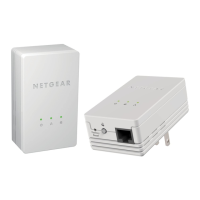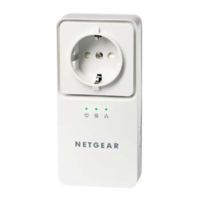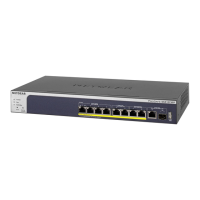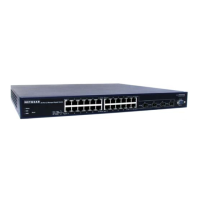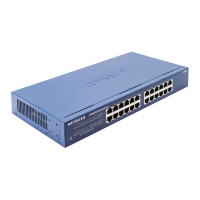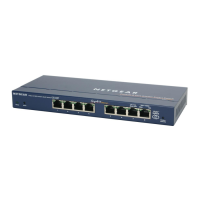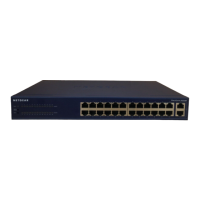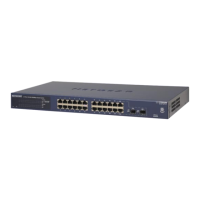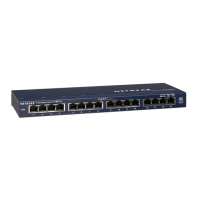Do you have a question about the NETGEAR AV Series and is the answer not in the manual?
Lists the NETGEAR AV Line M4250 switch models supported by the manual.
Explains the switch's embedded web server and management software.
Provides steps to access the switch's AV UI via web browser.
Guides on registering the product for updates and warranty.
Details preconfigured templates for optimizing audio/video environments.
Describes how to create and assign network profiles using AV templates.
Guides on creating personalized AV profile templates with specific settings.
Explains the feature for automatically enabling Trunk mode on interfaces.
Describes dynamic Layer 2 LAGs formed via LACP between devices.
Steps to create a Link Aggregation Group (LAG) with multiple ports.
Explains how to change the hash mode for load balancing in Auto-LAGs.
Details how to set multicast traffic handling for ports (Default, Force, Block).
Instructions on blocking specific multicast IP address ranges.
Configures PoE capabilities, budgets, and port priorities for connected devices.
Allows defining schedules for PoE power delivery to attached devices.
Shows the switch's current PoE power usage against its budget.
Manually controls the administrative status of switch ports and LAGs.
Configures the maximum Ethernet frame size supported by interfaces.
Shows detailed status, media type, and profile assignments for ports/LAGs.
Introduces 802.1X port-based authentication concepts.
Configures global 802.1X access authentication settings.
Details the configuration and management of RADIUS servers for authentication.
Guides on adding, activating, and managing switch licenses online or offline.
Instructions for updating the switch's firmware via the AV UI.
Covers saving, downloading, and restoring switch configurations.
Manually sets or synchronizes the switch's date and time using SNTP.
Configures static IP or DHCP for the switch's management interface.
Restores the switch to its original factory settings and erases custom configurations.
Shows the operational status and legends for switch ports.
Configures logging levels and types for switch events.
Views and resets port traffic counters and statistics.
Tests the connectivity and status of cables connected to switch ports.
Instructions to download diagnostic files for technical support.
| Model | AV Series |
|---|---|
| Switching Capacity | Varies by model |
| Quality of Service | Yes |
| Jumbo Frame Support | Yes |
| Energy Efficient Ethernet | Yes |
| Ports | 5, 8, 16 |
| Layer | Layer 2 |
| Mounting | Desktop |
| Speed | Gigabit Ethernet |
| Power Budget | Varies by model |
| Fanless Design | Yes |
